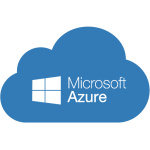About Microsoft Azure SQL Database
Microsoft Azure is a public cloud computing service designed for building, testing, launching, and managing applications and services via Microsoft-managed data centers. Through its platform-as-a-service (PaaS), software-as-a-service (SaaS), and infrastructure-as-a-service (Iaas) offerings, Microsoft Azure integrates with a wide range of programming languages and tools. In addition to working with Microsoft's proprietary software and systems, Azure is compatible with third-party solutions, including Linux. As an extremely popular cloud services platform, many businesses and enterprises have used Microsoft Azure to migrate their computer systems to the cloud and eliminate the costs and staff requirements needed to maintain physical onsite servers.
About Buffer
Buffer is a web and mobile-based platform that allows you to manage all of your company's social media activities from a single place. With Buffer, you can design, schedule, and share content on Instagram, Facebook, LinkedIn, Pinterest, and Twitter — then analyze the results of your campaigns to measure their success and understand how your community is responding to them.
Popular Use Cases
Bring all your Buffer data to Amazon Redshift
Load your Buffer data to Google BigQuery
ETL all your Buffer data to Snowflake
Move your Buffer data to MySQL
Microsoft Azure SQL Database's End Points
Microsoft Azure Virtual Machines
As one of its IaaS features, Microsoft Azure allows users to deploy virtual machines developed in Windows or Linux.
Microsoft Azure App Services
As one of its PaaS features, Azure App Services allows you to publish and manage websites and web applications.
Microsoft Azure WebApps
WebApps is Microsoft Azure's high-density web hosting service, which allows you to build web applications more efficiently with PHP, Node.Js, or Python, then deploy them on the Azure Cloud.
Microsoft Azure WebJobs
WebJobs gives you the ability to launch applications in the Microsoft App Services space and host them in the cloud.
Microsoft Azure Mobile Engagement Services
Microsoft Azure's mobile engagement service provides real-time tracking, data analytics, and deep insights to better understand user engagement and behavior for your mobile applications.
Microsoft Azure HockeyApp
Microsoft Azure's HockeyApp is a productivity-enhancing driver that helps you design, build, beta test, and distribute mobile apps more efficiently.
Microsoft Azure REST and SDK APIs
Azure's REST and SDK APIs allow you to store and access your application data on Azure's cloud platform.
Microsoft Azure Table Services
Azure Table Services facilitates the storage of data in structured text form so you can access it via a partition and primary key.
Microsoft Azure Blob Service
Blob Service empowers you to store unstructured text information and binary data as 'Blobs' accessible through HTTPS.
Microsoft Azure Queue Service
Queue Service streamlines asynchronous communication across multiple programs.
Microsoft Azure File Service
Azure File Service facilitates cloud data storage via REST API and the SMB Protocol.
Microsoft Azure Search Functionality
Azure's data search functionality supports more efficient data searching with REST and SDK APIs.
Microsoft Azure SQL Data Warehouse
Azure's SQL data warehouse is managed by Microsoft within the Azure Cloud Facility. It offers high-performance querying and enhanced data security.
Microsoft Azure Messaging Service
Azure Service Bus is a messaging service that facilitates communication between the Azure Cloud and applications operating on-site and off-site to build more reliable and scalable applications. The Azure Service Bus supports communication via Event Hubs, Queues, Topics, and Relays.
Microsoft Azure Automation Features
Azure Automation allows users to automate frequently-repeated tasks that they perform in their cloud and enterprise environments to save time and prevent human errors. Automation improves the reliability of common administrative tasks. Azure automation allows you to schedule tasks with runbooks or use Desired State Configuration for the automation of configuration management tasks.
Buffer's End Points
Buffer Social Media Publishing Tools
Buffer's social media publishing tools allow you to tailor and perfect your posts to fit the nuances of each social network your company uses. Use the platform to design drafts of your posts, collaborate with team members, finetune your strategy, and plan the timing of each post for maximum effectiveness — all from a single platform that gives you a bird's-eye view of your content-lineup.
Buffer Customer Interaction Solutions
Buffer's platform enhances business-to-customer interactions by expanding your ability to immediately respond to social media conversations, resolve customer problems, and collaborate with the right team members to create a better, more interactive experience between your audience and brand. With Buffer's shared team inbox, you can interact with customers on a one-on-one basis across all your social media platforms — be it Facebook, Twitter, or Instragam — from a single interface. Buffer also includes 'collision detection' features — that show which team members are viewing a conversation to prevent duplicate responses — and the ability to leave notes for others who might respond to the conversation later.
Buffer Social Media Analytics
Buffer tracks data pertaining to all of your team's social media interactions — then uses this information to create performance reports that will help you improve customer engagement, grow your audience, and boost sales. With data on all of your social media platforms visible from a single, interactive analytics dashboard, everyone on your team has access to the information, metrics, and insights they need. Drill into statistics on individual posts and zoom out for general information. You can also customize reports to show specific team members exactly what they need to see.








